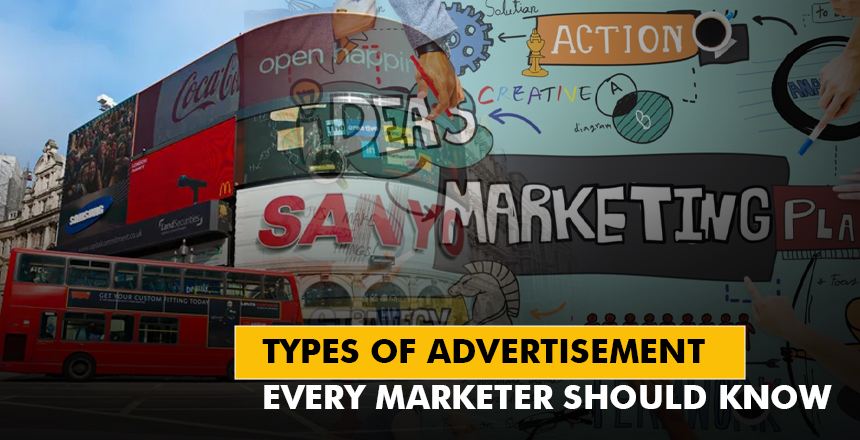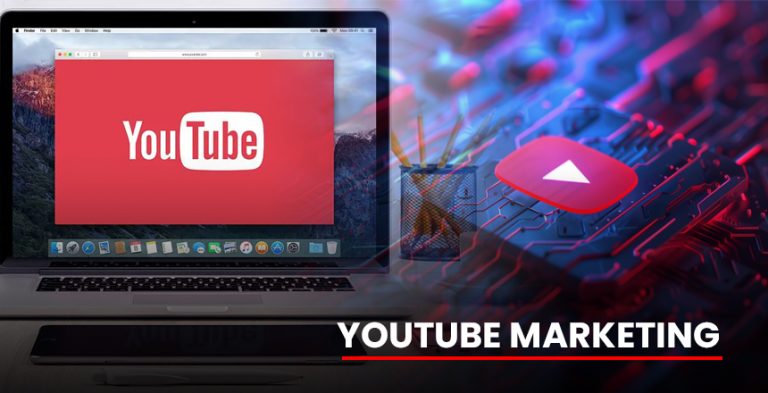More than just advertising your brand correctly, this is what creates a brand in the present-day highly competitive market. Today, there are many more options available in advertising apart from the traditional forms of print and broadcast. Knowing about these different types of advertisements is crucial whether you’re a pro in this industry or a rookie looking to generate awareness.
Therefore, here are the most significant forms of advertising that should be known by every marketer:
1. Print Advertising
- Print advertising is among the oldest forms of marketing and is advertising through newspapers, magazines, brochures, and flyers. Although its significance is now entirely outmatched by that of digital media, it certainly has a place in any local or niche market.
- Best suited for: Local businesses, luxury brands, and target audiences who prefer hard-copy reading materials.
Advantages:
- – Physical, Permanent
- – High trust factor because they come from established publications
- – Targeting with respect to readership demographics
2. Broadcasting advertisement
By broadcast advertising, we refer to advertising by television and radio. Through this medium a brand is able to reach a mass audience that makes it possible for a nation to inform a large public about the advertising campaign. Despite the advent of streaming platforms, broadcast advertising does not seem to lose relevance.
- Best for: Big brands looking to reach out to a large audience.
- Advantages:
- High visibility and engagement
- Strong storytelling possibilities
- Most suitable for emotional and powerful messages
3. Advertisement in Digital
Advertising on the Internet has changed the game, targeting people with laser-like precision based on demographics, behavior, and interests. Search engine ads, display ads, and videos on websites and apps come within this definition.
Best For: Measurable, scalable results in brands of all sizes.
- Advantages:
- Highly targeted and trackable
- Very cost-effective options (Pay-per-click, CPM, etc.)
- Real-time, easy adjustment and optimization
4. Social Media Advertising
- Social media sites like Facebook, Instagram, LinkedIn, TikTok, and X formerly known as Twitter, offer highly customizable ad formats such as stories, reels, carousels, and sponsored posts. Such ads can therefore be personalized to align with the user’s behavior, interest, and location.
Best for: Brands that want to reach out to a specific demographic or build a community engagement around these.
- Advantages:
- Advanced targeting and retargeting
- Native ad formats that blend with content.
- It is excellent for engaging users and storytelling for brands as well.
5. Native Advertising
- This type suits ads to blend with platform content so they are less intrusive and more attractive for users. Sponsored news articles or promoted product listings are such examples.
Best for: Brands who want to teach or amuse their audience without selling anything.
- Pros:
- Very high user engagement
- Less likely to be ignored or blocked
- Best for content marketing strategies
6. Outdoor (Out-of-home) Advertising
- AAO also Contains Billboards, Transit Advertisement, and Digital Signs Installed in Outdoor Locations Hence a Good Tool for Increasing Brand Visibility Reaches through Numbers of People into Very High Traffic Zones.
Best for: General awareness campaigns at urban or high-traffic locations.
- Advantages:
- Wider reach and higher visibility
- Long exposure time
- Can’t skip like digital ads
7. Influencer Marketing
- This is the method applied when individual social influencers enter into a partnership to promote a brand, product, or service. It seems to have developed most in the use of such communities as Instagram, TikTok, and YouTube.
Best for: Reaching very niche audiences through trusted voices.
- Advantages:
- Builds trust and authenticity
- Effective with Gen Z and millennials.
- High engagement rates.
8. Email Ads
- Email advertising reflects advertisement emails, newsletters, and automated campaigns. This would make a very personal and direct line of contact with potential customers, and could even personalize such based on customer behavior and preferences.
Best for: Lead nurturing, customer retention, and ecommerce promotions.
- Advantages:
- Cost-effective
- Performance metrics are measurable
- High ROI when executed well.
9. Guerrilla Advertising
Guerrilla marketing involves using unusual and creative abnormal strategies to catch an eye in not so usual locations. Such tactics could consist of having a highly publicized flash mob or some graffiti art, or maybe a one-of-a-kind exhibit in a public area.
Best applied to: Magento brands, bold and creative, and operating under a shoe-string budget.
Benefits
- Memorable and shareable.
- Expense-effective, wealth of impact
- Word-of-mouth sensation
10. Mobile Advertising
Mobile Advertising is also a part of the penetrating media that all households can use. These types of advertisements are SMS marketing, in-app ads, and mobile search ads. It is perfect for individuals who are on-the-go to capture offers or updates.
Best for: Time-sensitive campaigns: app promos, location-targeted campaigns.
Benefits:
- Direct, real-time communication
- High open and response rates
- Location and behavior-based targeting
Final Thoughts
Advertising becomes a hit-and-run into a process that hasn’t any one blanket solution. The most effective marketers are therefore: those who understand the potentials that a given type of advertisement has as well as its boundaries and who can use them strategically and integratively towards their objectives. Brands can integrate performance analysis with what channel works best for them to target their audience more effectively and thus build those lasting relationships.
No matter how large or small your business is, the size of the industry it breaches, these types of advertisements will change perceptions, even by helping you be savvy with budgets and driving better results.








